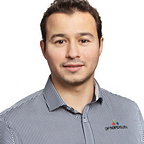How to relieve Residual Stresses?
Thermal and mechanical treatments are available to relieve residual stresses.
Thermal treatments
The thermal treatments are generally a more common way to relieve residual stresses than mechanical treatments. The thermal treatments usually do not induce any new residual stresses to balance existing residual stresses’ negative effects. Thermal treatments can be separated into two categories as preheating and post-heating treatments.
Preheating
Preheating is heating the component to increase its temperature to a higher degree than the room temperature and, to a close degree, to the process temperature. The degree of the temperature depends on the material and the process. Preheating can be made in a furnace, with an induction coil, or with a hot blast.
If the temperature is lower than the austenite formation range, the preheating treatment does not cause any dramatic microstructure changes. When the temperatures are too high, recrystallization might occur, which changes the microstructure. High temperatures may also cause surface oxidation, especially in stainless steels, where corrosion is possible. The preheated material will have better thermal gradients, causing a more uniform cooling, but this may also cause a faster cooling rate that could soften the material.
Post heating
Post heating is heating the component to a temperature level equivalent to or higher than the preheating temperature.
Post heating is a stress-relieving operation that aims to redistribute the residual stresses. Post heating does not have a standard that can be applied to all materials. Post heating parameters depend on the material and the size of the component. The cooling rates are again important for stress relief.
Mechanical treatments
Mechanical treatments usually aim to induce new compressive residual stresses to balance existing tensile stresses’ detrimental effects. Mechanical treatments can be categorized into three different processes.
Peening processes
Peening processes, such as shot peening and laser peening, are the most common and easy cold working processes to induce compressive residual stresses. During shot peening, the surface of a component is peened with small spherical balls, called shots. The process induces plastic deformation on the surface, relieves surface tensile stresses, and introduces beneficial compressive residual stresses. During the laser peening process, the component’s surface is peened with shock waves at high speed and high power, which causes plastic deformation by yielding the material.
Proof stressing
As stress reliving operation, proof stressing also plays a major role in the testing of structural integrity. During this process, a uniform load is applied to reduce the residual stress by balancing the distribution.
Vibratory stress relief
During this process, the component is vibrated at its natural frequency for a period of time to relieve the existing stresses. The vibratory stress relief process is mainly used for dimensional stability of welded parts.
To sum up,
As we know by experience and well-established research studies, all manufacturing processes create some degree of residual stress. The effect of these stresses could be imperceptible, or they could cause severe problems. Relieving the residual stresses by the above-mentioned methods could help to reduce the negative effects of residual stresses. However, measuring and verifying the residual stresses’ magnitude and the sign is still the best and the most common practice that industries have already established.
Sources
“Principles of laser materials processing”, Elijah Kannatey-Asibu, Jr.
This article was initially posted at https://www.linkedin.com/pulse/relief-residual-stresses-murat-deveci/
This article was also posted at https://www.murat.fi/relieving-residual-stresses/
The visuals are courtesy of Stresstech.
